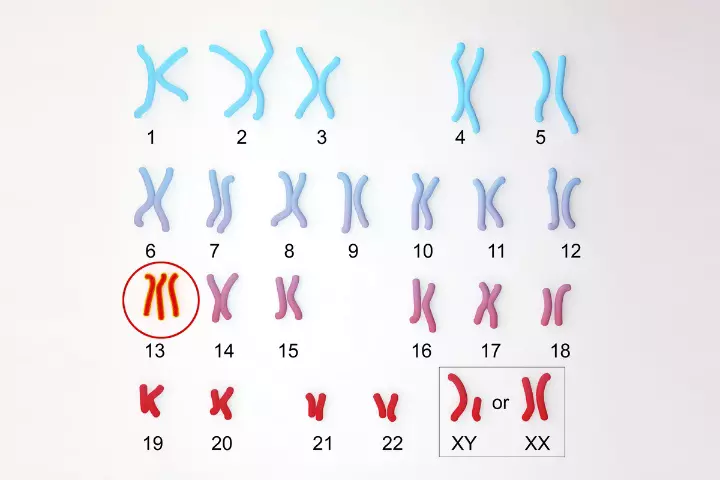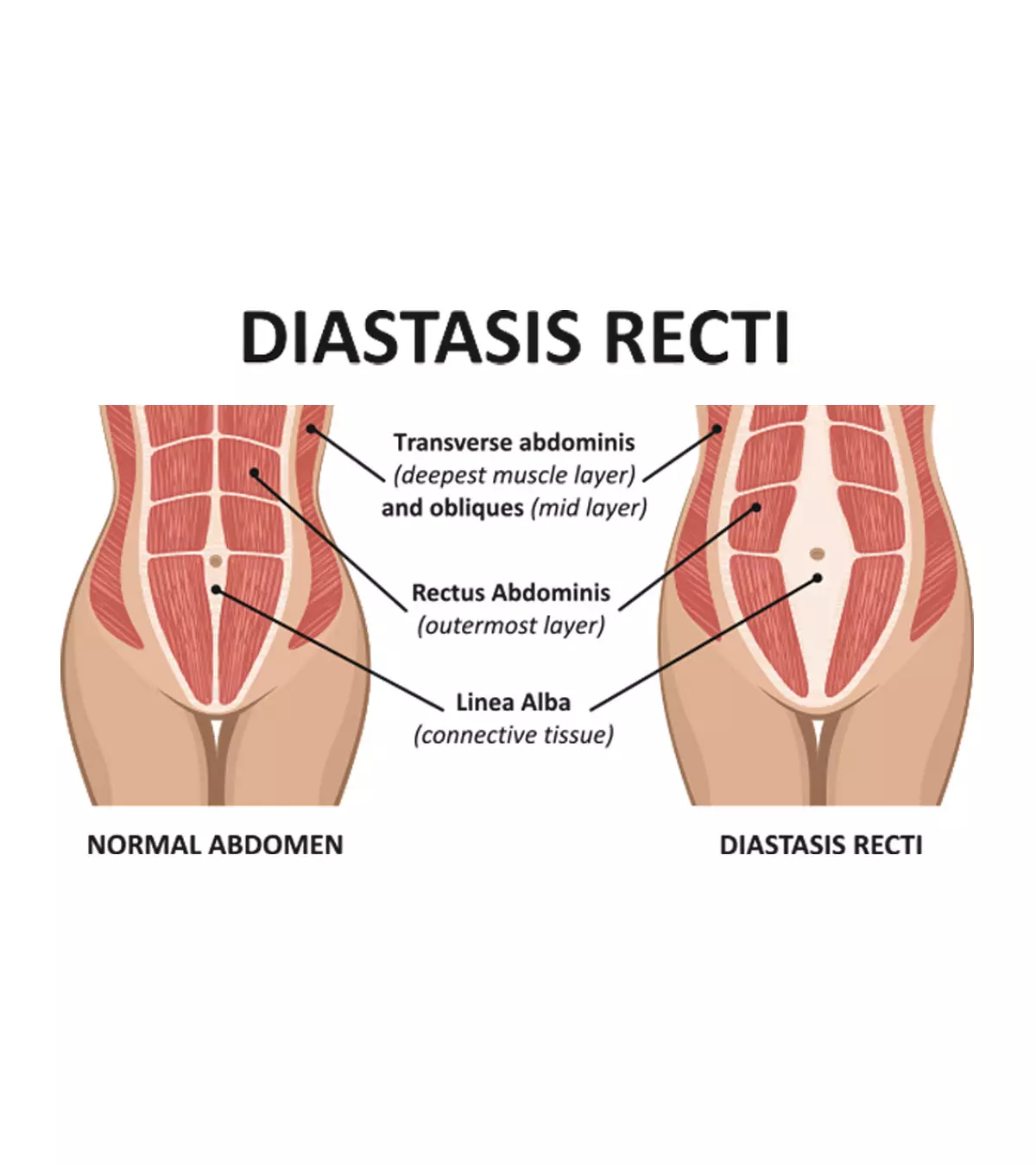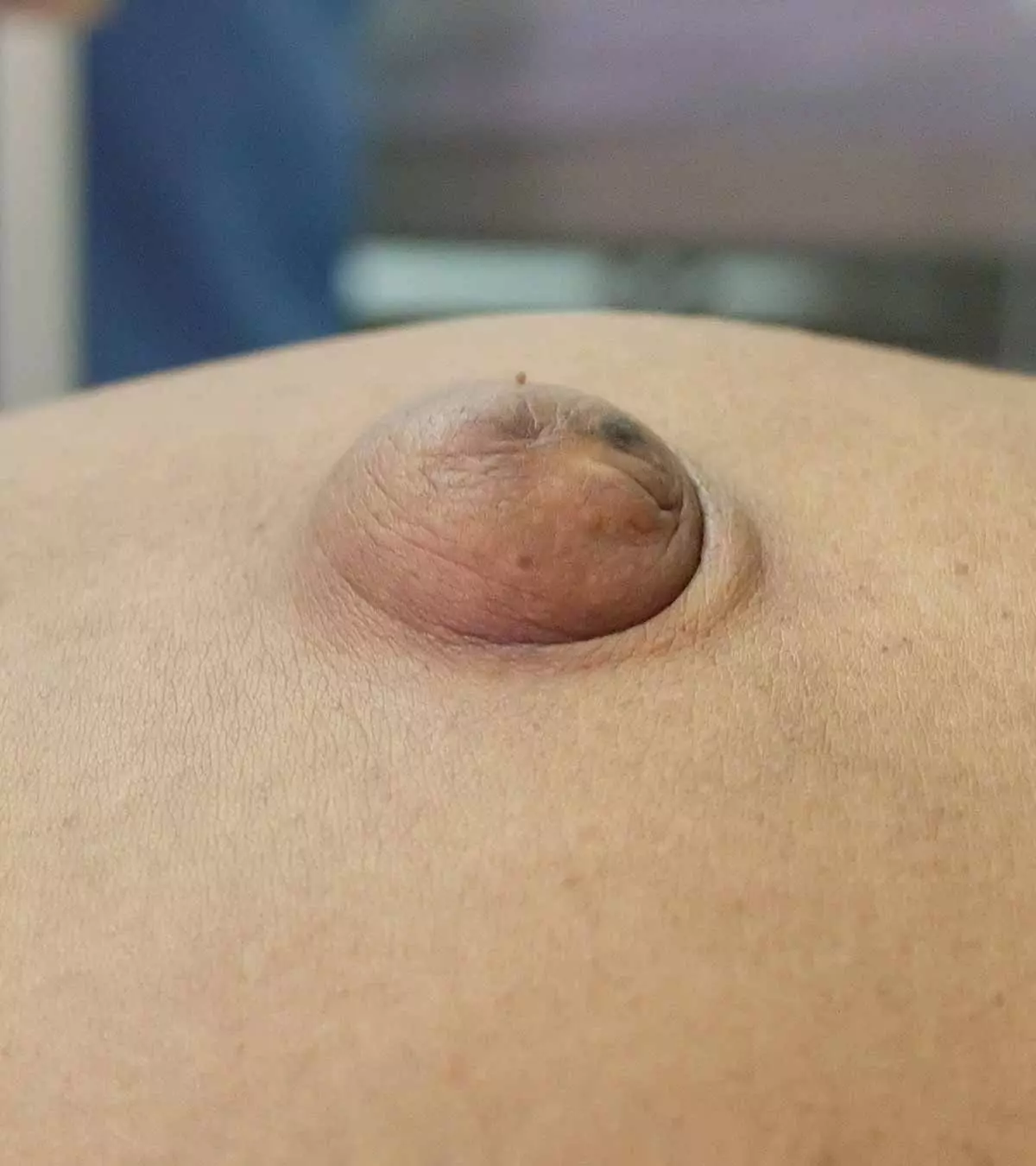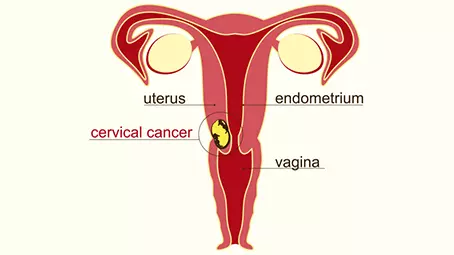
Image: iStock
There are several prenatal diagnostic screenings and tests that provide diagnostic useful information about fetal health. Screening tests are usually done during the first and second trimesters to determine if there are any health risks to your baby.
One such screening is a nuchal translucency scan or NT scan. The majority of these fetal assessments performed during the early stage are noninvasive procedures. In this MomJunction post, we tell you when this procedure is done, why it is done, and what the process is.
Key Pointers
- Nuchal translucency or NT scan is an ultrasound test that measures fluid thickness behind the fetus’s neck tissue.
- If the test indicates a risk, doctors may advise further investigations, such as amniocentesis and chorionic villus samples.
- NT tests are non-invasive and do not harm you or your baby; however, they are optional, so you may talk to your doctor before getting them done.
What Is A Nuchal Translucency Scan?
Nuchal translucency refers to the sonographic image showing the fluid accumulation behind the fetus’ neck.

Image: Shutterstock
The nuchal translucency or NT scan is an ultrasound test where the neck fold measurement is used to determine the amount of this fluid accumulated in the space behind the fetus’s neck tissue. Increased fluid could indicate a risk of abnormality (such as Down Syndrome or other genetic disorder or birth defect) to the baby.
This early detection test only lets you know if the baby has a chance of any risks, and not about the risk or the abnormality. Also, it scans for the risks of congenital heart problems. It is a part of the first-trimester screening and is done alongside the mom-to-be’s blood work (1).
If the NT scan indicates anything amiss, the doctor might recommend other diagnostic tests such as amniocentesisiA test performed during pregnancy to determine specific genetic diseases or birth abnormalities. and chorionic villusiPrenatal diagnostic methods used to detect fetal abnormalities by taking a sample of the placental tissue. samples to know more about these risks (2).
When Is Nuchal Translucency Screening Done?
The ideal time for this screening is between 11 and 13+6 weeks, and the fetal crown-rump length in pregnancy (CRL) should be in the range of 45mm and 84mm.
During this time, the fetal lymphatic system is at its developing stage, and the placenta’s peripheral resistance is high, which means it is the right time to detect if there is any risk of abnormality.
Before ten weeks, the fetus is too small to check for NT measure. And after 14 weeks, the fetus takes a vertical position and the measurement is difficult. The additional fluid is drained, making it difficult to determine the nuchal translucency measurement (3).
Lindsay, an expectant mother, shares her experience of having an NT at 12 weeks. She says, “Yesterday we had our Nuchal Translucency scan performed and another checkup with the Midwife! The ultrasound was really great! We were able to see our baby immediately. She (or he) was moving all around, sucking on her hands and kicking her cute tiny little feet! She measured exactly right at 12 weeks 2 days (i).”
How Is The NT Scan Done And How Much Time Does The Procedure Take?
The scan is usually transabdominal, but in some cases, it could be transvaginal. The sonographer will put a gel on your belly and use a transducer over it. The professional will observe the black and white image of the fetus on the monitor to measure the fluid. The black part on the image is the fluid, while the white line is the skin.
 Quick tip
Quick tip
Image: Shutterstock
This non-invasive procedure causes no known harm to the mother or the baby. During the scan, the image magnification focuses on the head of the fetus and thorax (4). It takes approximately 30 minutes for the scan to get completed.
The scan also helps to see if the fetus has a nasal bone. To detect the risk of chromosome abnormalities (Down syndrome, trisomy 13iA disorder associated with significant intellectual impairment and physical deformities due to an extra copy of chromosome 13. or trisomy 18), the results of NT measurement, blood work (pregnancy-associated plasma protein-A (PAPP-A)iA placental protein necessary for implantation, placental health, and normal fetal development. and hCG), and nasal bone data are combined and analyzed. These combined risk assessment tests can improve the detection rate. In some cases, when the results of PAPP-A and hCGiA hormone produced by the placenta during pregnancy to sustain the pregnancy and nourish the fertilized egg. are lower or higher than average, there could be risks of trisomy 13, trisomy 18iA disorder that is characterized by developmental delays, poor growth, and physical abnormalities due to an extra copy of chromosome 18. , or Down SyndromeiA condition in which a child is born with an extra copy of chromosome 21, resulting in intellectual and physical disabilities. (5).
For instance, if the combined test results show a chance of 1 in 500, it means the likelihood of the baby having the abnormality is one in 500 cases; other diagnostic and fetal assessment tests are recommended to confirm the diagnosis.
 Quick fact
Quick factWhat Is The Normal Translucency Measurement?
NT below 3mm is considered normal between the gestation weeks 11 and 14, and CRL between 45 and 84mm.
Ideally, the thickness of nuchal translucency increases with the CRL. Lindsay further adds, “The measurement was .13 cm. Before going for the scan I, being the researcher I am, looked up the measurements for a ‘normal’ scan and found out that anything between .1 and .3 cm is good. We were extremely relieved that we ‘passed’ that part of the test!… The ultrasound technician then gave us a really awesome surprise. She switched the machine over to 3D/4D. We were able to see the baby in 3D! It was a really special and amazing moment.”
To be more precise, the normal NT ranges from 1.2 to 2.1mm when the CRL is 45mm. And when the CRL is 84mm, the normal NT range is from 1.9 to 2.7mm. But if it is between 3 and 3.5mm, then it is considered high (6) (7).
Note: The NT measure is then analyzed per the gestational age and maternal age to know the risks of abnormality.
How Accurate Is The Nuchal Translucency Scan?
The NT scan is only a screening test, which shows whether the baby has any chance of congenital disabilitiesiA structural or functional abnormality present from birth . Abnormal results don’t always mean there’s a problem with the baby. Your healthcare provider may suggest further tests to look for any concerns. The accuracy of the results can be determined when the following diagnostic tests are done to confirm any suspicions of a birth defect.
If the result of the screening test is positive, it means the baby could have a defect. But the diagnostic test may show that the baby is healthy with no problem. In such cases, the NT result is called a false-positive. In another case, the screening might show negative, but the actual diagnostic test could be positive, indicating that the baby has a defect. This is called a false-negative. Therefore, the NT scan cannot be considered 100% accurate (8).
What Happens If Nuchal Translucency Scan Indicates A Problem?

Image: Shutterstock
In case the NT scan indicates a risk of any abnormality (be it trisomy 13 or 18, or Down syndrome), you should know that it doesn’t necessarily mean that your baby actually has the abnormality or is definitely at risk of developing it. However, in case the measurement is high, your gynecologist will advise you to go for genetic counseling, where you will be explained the next course of action.
If the NT scan indicates a risk, amniocentesis and chorionic villus samples are the diagnostic tests recommended to further detect if there is any chromosomal abnormality. The accuracy of these tests is higher than 99% (5).
If any of these tests show a high risk of birth defects, the doctor will refer you to a counselor or a special obstetrics and gynecology team (doctors, nurses, and midwives) to explain the findings of the test and other necessary aspects to help you make an informed decision.
Based on the risk assessment and other crucial details, you (along with your partner and family) may decide to either wait for the second-trimester test results, go for a second opinion, or terminate the pregnancy after careful thought.
Can Nuchal Translucency Determine Fetal Gender?

Image: Shutterstock
NT scan is done to determine if the fetus carries any chance of abnormality risk. In some cases, it is possible to determine fetal gender through the first-trimester scan. But the results might not be accurate. The chances of finding out the fetus’ gender are better when the second-trimester scans are done.
Is It Compulsory To Go For NT Scan?
No. You have the right to opt for any early pregnancy screening tests or NT screening if you want to know more about fetal development. Diagnosing any condition at an early stage of pregnancy can provide you with options.
Frequently Asked Questions
1. Can a baby with Down Syndrome have normal nuchal translucency scan results?
A normal NT scan result means it is unlikely that your baby has Down Syndrome (9). But remember, an NT scan can only predict the risk of Down syndrome or other chromosomal abnormalities. It can’t diagnose if the baby has Down Syndrome. Typically, an NT scan can detect “about 80% of fetuses with trisomy 21 and other major aneuploidies for a false positive rate of 5% (10).” This means that there are chances that a baby with Down syndrome has normal nuchal translucency results.
2. How long do NT scan results take to come?
The test results for the NT scan don’t come right away. It may take a few days for the test results to reach your doctor’s office. After you receive the results, your doctor will explain them to you and brief you about the risks, if any.
3. Do I need to fast for the nuchal translucency test?
You may be asked to drink two to three glasses of fluids an hour before the test. It is done to have a full bladder, which can help get a better ultrasound picture (11). Besides this, no special preparation is needed for the NT scan test.
4. Are there any after-effects of a nuchal translucency scan?
NT scan is a non-invasive test with no after-effects or side effects (12). Still, you can speak to your doctor if you have doubts about its safety for you and your baby.

Image: Shutterstock
During the first trimester, a nuchal translucency scan is an optional screening test that is recommended for pregnant mothers. It is a non-invasive ultrasound scan that causes no harm to you or the baby. The test reveals genetic and congenital abnormalities in the unborn baby (if any) by detecting fluid collection behind the fetus’ neck. If the test results reveal any abnormalities, more diagnostic tests should be performed to confirm any concerns of a congenital disability. It’s natural to feel nervous before a test, but discussing the procedure with your OB/Gyn may help you relax.
Infographic: Conditions Affecting Nuchal Translucency Measurements
Nuchal translucency measurements collected during nuchal translucency tests help detect fetal abnormalities. High measurements could indicate potential genetic disorders and syndromes. This infographic shares the likely fetal conditions that may lead to increased and, thereby, abnormal test results.

Illustration: Momjunction Design Team
A nuchal translucency scan is among the prenatal screening that expectant mothers need to do. This video is an insightful guide on how it is conducted and the chromosomal abnormalities it can detect.
Personal Experience: Source
MomJunction articles include first-hand experiences to provide you with better insights through real-life narratives. Here are the sources of personal accounts referenced in this article.
i. Nuchal translucency scan! 12 week 2 day ultrasound;https://overlordbaby.blogspot.com/2012/08/nuchal-translucency-scan-12-week-2-day.html
References
1. Nuchal translucency (NT) ultrasound; OHSU Center for Women’s Health
2. Nuchal translucency screening test; Michigan Medicine
3. A. Berger; What is fetal nuchal translucency; the BMJ (1999)
4. C Ratha and A Khurana; “First things first”: Images for a Proper Nuchal Translucency in the First Trimester 11-13 Weeks Scan; Journal of Fetal Medicine (2014)
5. Maternal serum screening, nuchal translucency scan and nasal bone sonogram; Gynecology & Obstetrics; John Hopkins Medicine
6. Simona. A. et al., Increased Nuchal Translucency in Fetuses with Normal Karyotype; Macedonian Journal of Medical Sciences (2024).
7. R. D. Domenico at al.; Increased nuchal translucency in normal karyotype fetuses; Journal of Prenatal Medicine (2011)
8. First-trimester screening for birth defects; Michigan Medicine
9. Nuchal translucency test; Medline Plus
10. Nuchal translucency scan; The Fetal Medicine Foundation
11. Nuchal translucency test; Mount Sinai
12. First-trimester-screen; American Pregnancy Association
13. Nuchal translucency scan; Pregnancy, Birth and Baby
Community Experiences
Join the conversation and become a part of our nurturing community! Share your stories, experiences, and insights to connect with fellow parents.
Read full bio of Dr. Irene (Eirini) Orfanoudaki
Read full bio of Ghazia Shah
Read full bio of Rebecca Malachi
Read full bio of Reshmi Das
















